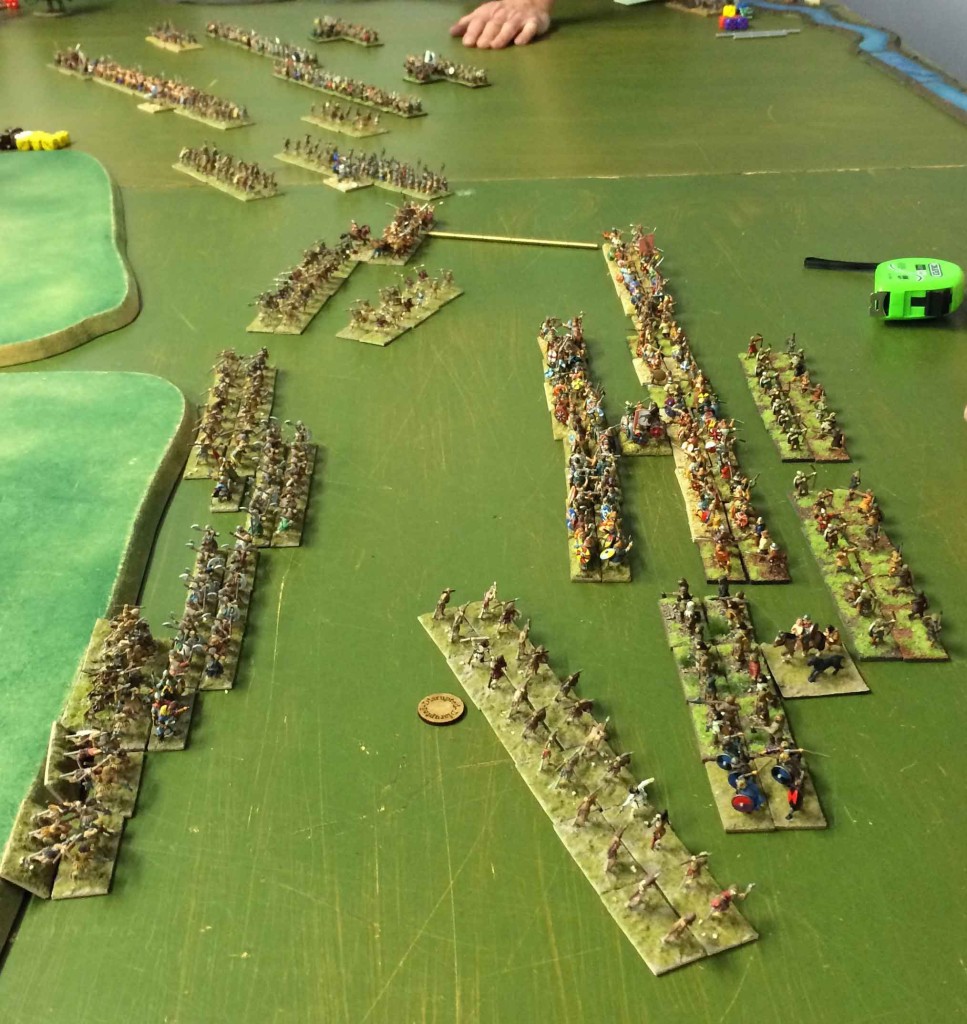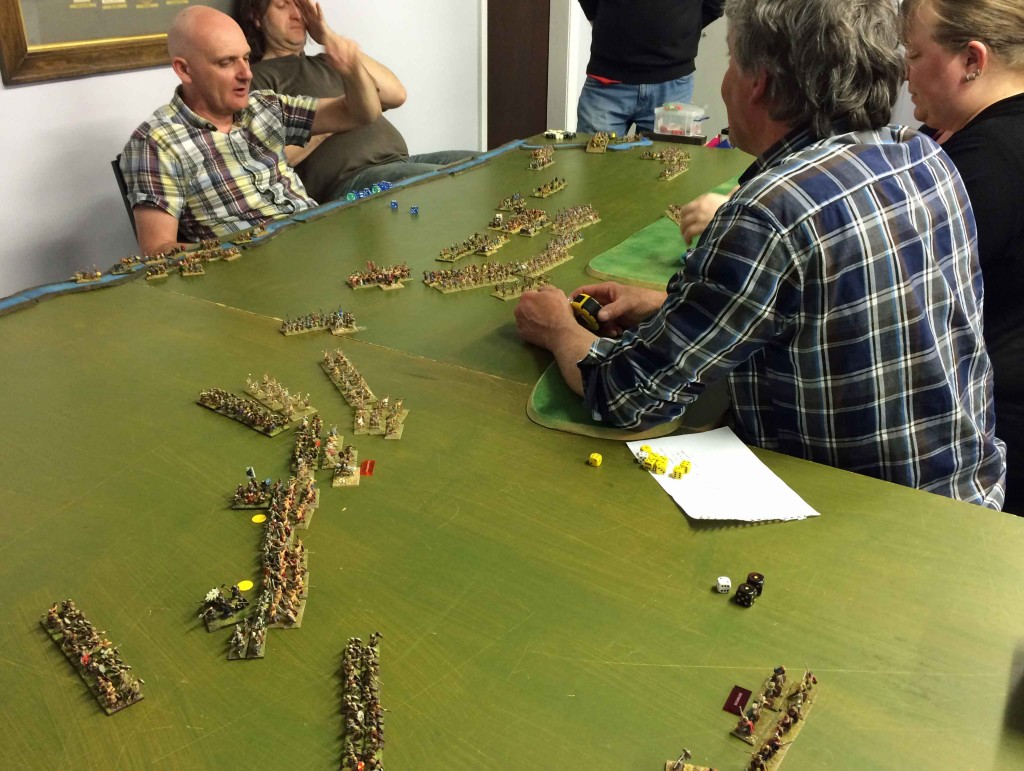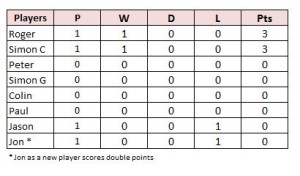Ferdinand Kettler peered out from his observation post on a misty summer morning across the stretch of water under his command. All seemed clear, as it had the day before and all the days he had been stationed there. He knew the enemy would be mad to attempt to land here and had assured his generals “even a superior force of three hundred thousand would still not be enough to successfully achieve any progress”. Then the mist began to clear and dark shapes could be seen on the water. They were small boats, scores of them,
approaching the shore and they were accompanied by a covering artillery barrage. As Kettler gathered his thoughts and his command the first wave of enemy troops came ashore…
Normandy in June 1944? No, Livonia (modern day Lithuania) in July 1701. The Great Northern War had begun the previous year when an alliance of Russia, Denmark-Norway and Saxony-Poland Lithuania declared war on the newly crowned King of Sweden, the 18 year old Charles XII. Despite his inexperience Charles acted quickly. Denmark was forced out of the war almost immediately,
and Russia was given a bloody nose at Narva. Charles’s attention now turned to the Saxons. A combined Saxon-Russian army of c.29000 under Steinau had entrenched themselves along the west bank of the river Duna (Latvian Daugava), opposite the Swedish held city of Riga. Not knowing when or where the Swedes might attempt to cross the 600m wide river they were inevitably stretched, but put out regular patrols. Steinau was away on one such patrol with a strong force to cover a feint by Swedish cavalry, leaving the rest of his army under the command of Paykull and Kettler. The Saxon defences were set back some distance from the river bank. This reduced the chances of them being outflanked and rolled up by a Swedish landing further along the river, and reduced the threat from the Swedish artillery in Riga. It may also have been a deliberate ploy to tempt the Swedes into a risky landing on the Saxon side. The Swedes had meanwhile gathered c.200 small boats to ferry their advance guard across the river and constructed a floating bridge for their cavalry and light guns to do likewise. They also built four floating batteries and brought up a corvette to provide artillery support.

Heavy guns from Riga also contributed to their firepower and these were able to reach some of the Saxon defences. Bad weather delayed the initial Swedish attack (shades of June 1944 again!) but by 4.00am on the morning of 19th July the first wave were embarked on their little boats ready to go. More boats filled with brushwood were set alight and pushed out into the river to create a smokescreen to mask the Swedish landings. The Swedish boats were eventually spotted, but the Saxon artillery and scouting parties were unable to prevent the first wave of around 3000 troops landing. A more organised attack by around 3500 Saxon infantry was beaten off by the stubborn Swedes (as suspected led by Charles in person), who pushed on to take a Saxon redoubt and gain enough ground to complete the construction of their floating bridge. A second Saxon attack was similarly beaten off, and the Swedes were able to bring their reinforcements across the Duna. By now Steinau had returned with his reinforcements and immediately took command. The Swedes had formed a reasonable defensive line with their left flank secured by the river, but their right flank was still vulnerable. Steinau launched a third attack on this flank with his cavalry. It had some early success but was eventually beaten off. It was now around 7.00am and Steinau called a meeting with his commanders. Despite more reinforcements under the Russian general Repnin arriving, and outnumbering the Swedes nearly 3:1, he decided to retire under cover of a feint attack. The battle had cost the Allies around 1300 dead and wounded, with another 700 men and 36 guns captured. Swedish casualties were probably around 500.

As I wanted to present a reasonably balanced club game that either side could win I won’t describe this “Crossing of the Duna” as a re-fight but rather ‘based upon’ or ‘inspired by’ the historical events. I have seen several differing orders of battle for this encounter and varying accounts of who arrived when, where and how. The forces used in this scenario were therefore something of a compromise and there was lots of dicing for arrival times and locations. The Saxon/Russian forces were commanded by the ‘Danish Brothers’ Dene and Simon Green; the Swedes were under the guidance of Paul Freeman, Simon Clarke and Steve Holt. As usual with these games both sides were in turn given a quick secret briefing on the lead up to, possible events during, and command objectives in the battle. The Swedes were given the opening move and the smoke lifted to reveal a corvette and a gun platform anchored in the river, covering the disembarking first wave of 4 Swedish infantry regiments under the personal command of Charles XII. I had allowed the Swedes to anchor the gun platform close to their landing zone on the Saxon side of the river which I thought may have been too generous – but events were to prove otherwise.

The Saxons had five infantry regiments strung out along their defence line and a redoubt with a 2-gun battery. They didn’t rush to counter the landing, fearing it could be a feint and that the main Swedish attack would come elsewhere and outflank them. They also knew they had reinforcements on the way and that their artillery had a good target in the exposed Swedish infantry. The Swedes, in contrast, went straight onto the offensive. They headed straight for the Saxon entrenchments and redoubt, hoping their second wave of infantry would secure the landing zone and cover the construction of the bridge.

The Swedish regiment on the left wing was destroyed as it reached the enemy entrenchment, but the others made it. Classed as superior, led by an inspirational commander, and with salvo capability in impact they stormed the Saxon defences. Amazingly the Saxon defenders survived this impact, but succumbed in the following round. Worse, their general was killed and the other Saxon unit defending this section was demoralised and fled, leaving the artillery to be overrun by the Swedes. The first Saxon reinforcements now arrived (three cavalry and two dragoon regiments) and on the first die roll possible!

However they entered on the table edge furthest from the action, and had to cross the front of the guns in Riga. They were hit several times during their advance, but passed every casualty and cohesion roll. As they approached a small stream between them and the enemy a second wave of 4 Swedish infantry disembarked (again on the first roll possible). Both Swedish infantry waves had time to wheel and present a more or less solid line to the Saxon cavalry and dragoons. To make a difficult situation even stickier the Swedish guns on the corvette and platform were now hitting their targets. Not everything went Sweden’s way. One of the Saxon dragoon regiments lined the river bank and found the Swedish gun platform in musket range; a series of lucky hits and unlucky cohesion rolls forced the crew to abandon their guns and dive overboard to safety. The rest of the Saxon infantry decided there were no Swedish flanking forces; they left their redoubts and marched towards the Swedish infantry. The completion of the Swedish floating bridge, and therefore their cavalry and light guns, was delayed, but the next round of Allied reinforcements arrived immediately. Yet again these reinforcements arrived on the table edge furthest from the main fight and in front of Riga’s guns, and these reinforcements were 5 regiments of poor quality Russian infantry. The Saxon cavalry and infantry now made a general advance, mainly against the second wave of Swedish infantry. These were only classed as average and the Saxons made some headway.

With a series of disastrous cohesion rolls three Swedish regiments were destroyed, and the Saxon Guard Infantry and Cavalry were able to put themselves between the Swedish floating bridge and their infantry.

When the Swedish cavalry eventually crossed the completed bridge they were met by the Saxon guard cavalry and fought to a standstill, delaying the rest of the Swedish column from landing. During all of this the Russian infantry opposite Riga had been marching to the sound of battle. As before the Swedish guns hit their targets regularly and the Russians saved their casualties regularly, but failed every cohesion test going. Two of their five regiments routed before the remainder reached a safe distance, but these were not of sufficient quality or quantity to spearhead another attack on the Swedes. The remaining Swedish infantry, with artillery support, fought back and destroyed a Saxon cavalry regiment and their Guard Infantry. This left the Saxon Guard Cavalry isolated at the Swedish bridgehead by the end of the night’s play. It was an untenable position so I gave a marginal victory tothe Swedes.

They had secured a bridgehead, destroyed the Saxon redoubt and captured their artillery, but the casualties suffered were far higher than in the historical encounter. With yet more Saxon and Russian reinforcements on the way maybe Steinau would consider another attack on the Swedish position after all…


































